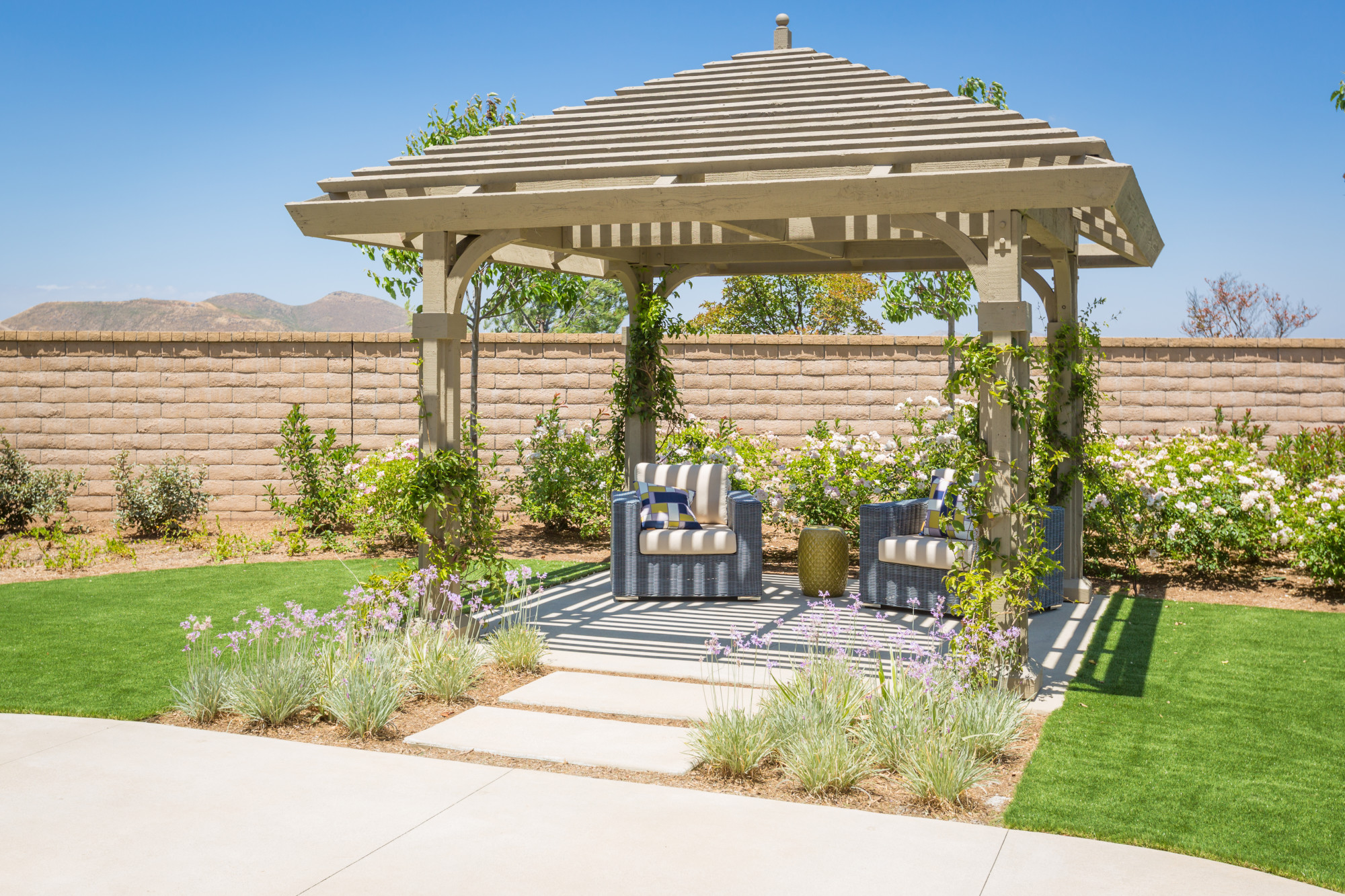Will a Backyard Pergola Add Value to Your Home?
May 21, 2019 Some outdoor living improvements can get up to a 100% return on your investment.
Some outdoor living improvements can get up to a 100% return on your investment.
The right outdoor space can immediately convert your backyard from average to world-class. Patios, decks, and pergolas provide aesthetic appeal and shade.
Those visiting your home will immediately be able to see themselves barbecuing, socializing, and breathing in the relaxing atmosphere. They will see your home as a warm, comfortable place to live.
Pergolas are one of the least expensive ways to create an outdoor living area. They add height and “frame” the area without the high cost of a deck or patio.
Is a backyard pergola worth the money you will spend on it? Will it help to sell your home? Let’s take a look.
What Is a Pergola?
A pergola is a rectangular platform set on posts that provides beauty and shade outdoors. They are open-beamed constructions that create an outdoor entertaining space as well as architectural interest.
The latticed sides encourage plants and vines to climb up, and they are perfect for hanging flowers, window boxes, and gazebo boxes. You can add furniture, lighting, and entertainment extras when you are expecting company. During the day, simple outdoor tables, chairs, and plants make it a welcoming, attractive garden space.
Plants growing through your pergola can add color and a Renaissance feel. The most common type of material used for pergolas is wood. They can, however, also be constructed from vinyl, fiberglass, composite, or aluminum.
How Much Is a Pergola?
It is possible to build a pergola by yourself from scratch for only a few hundred dollars. You will need to be confident that you can follow the directions in a kit without too much trouble.
You can purchase a Do-It-Yourself Pergola kit from Lowes or Home Depot for as little as $600. If you are handy, all it will cost you is the expense of paying for lunch for a few friends who help you out.
Most Pergola kits are in the $1,000 to $3,000 range. An aluminum kit will be the least expensive, starting around $1,500. Getting them professionally installed will probably cost another $150.
Some folks prefer aluminum or fiberglass pergolas because they are more resistant to weather damage. Wood pergolas often need to be resealed, repainted, and repaired. Fiberglass pergolas, with paint and installation, will cost around $4,000.
A 12 x 12-foot wood pergola kit starts at around $2,000. If you are having someone else build it for you, plan on an extra $200-$500 in installation costs.
A custom kit that is built and designed to your specifications will be a bit more expensive. These are around $4,000.
A pergola custom-built by a contractor will be the most expensive, costing anywhere up to $7,000.
The average cost for a pergola is $3,500. Your price will vary greatly depending upon the size of your structure, as well as the types of materials you use.
Return on Investment
As with any outdoor structure, the return you get on your investment will depend upon a number of factors.
In warmer climates, where outdoor entertaining happens more often during the year, you will be more likely to get a high return on an outdoor living area.
The return of investment on decks in Minnesota, for example, is 46.3%. In California, it is 68.5%. In general, you will probably get about a 50%-80% return on your investment.
You will also be more likely to get a return in a “hotter market.” If homes are going for asking price or above asking price in your area, an outdoor entertaining space could set your home apart as a valuable commodity.
If you have other outdoor entertainment elements on your property, such as a pool or kitchen, buyers will view your home as a great space to impress their friends with outdoor gatherings. They see this as a luxury that is worth paying extra for.
The return on investing in a pergola is not as high as it would be for a deck or patio, which have an ROI of around 75%-80% in some areas.
The cost of these structures, however, is very high compared to a pergola. The average homeowner spends around $7,000 to build a 200 to 500 square-foot deck.
Personalizing Your Pergola
Many pergola-owners choose wood because it is natural-looking and enhances their surroundings. A popular type of wood for building a pergola is pressure-treated pine. It is affordable and rot-resistant.
Others choose cedar because it is lightweight but strong. It can be easily painted or stained. Pressure-treated woods are resistant to rotting and warping, but sometimes have indentations left by the treatment.
More expensive woods include redwood, oak, and cypress.
Some homeowners prefer aluminum pergolas because they have fewer maintenance costs over time. Aluminum is resistant to rain and snow, and it comes in a variety of colors, some mimicking those of wood. It is also an inexpensive material to install.
There are lots of ideas for personalizing your pergola on social media. Some include using it as a frame for your outdoor kitchen. You can also add simple outdoor lanterns or tiki torches for outdoor entertainment.
Outdoor furniture, swings, and gardens are just a few of the ways to help your pergola help your backyard. Oftentimes, owners let their hearts and creativity take over with vines, cascading flowers, waterfalls, and table-scapes.
The Value of a Backyard Pergola
A backyard pergola can add height, depth, and class to your landscape. Choosing the right materials, dimensions, and builders for your construction will go a long way toward adding value to your home.
For more information on selling your home, contact us today.